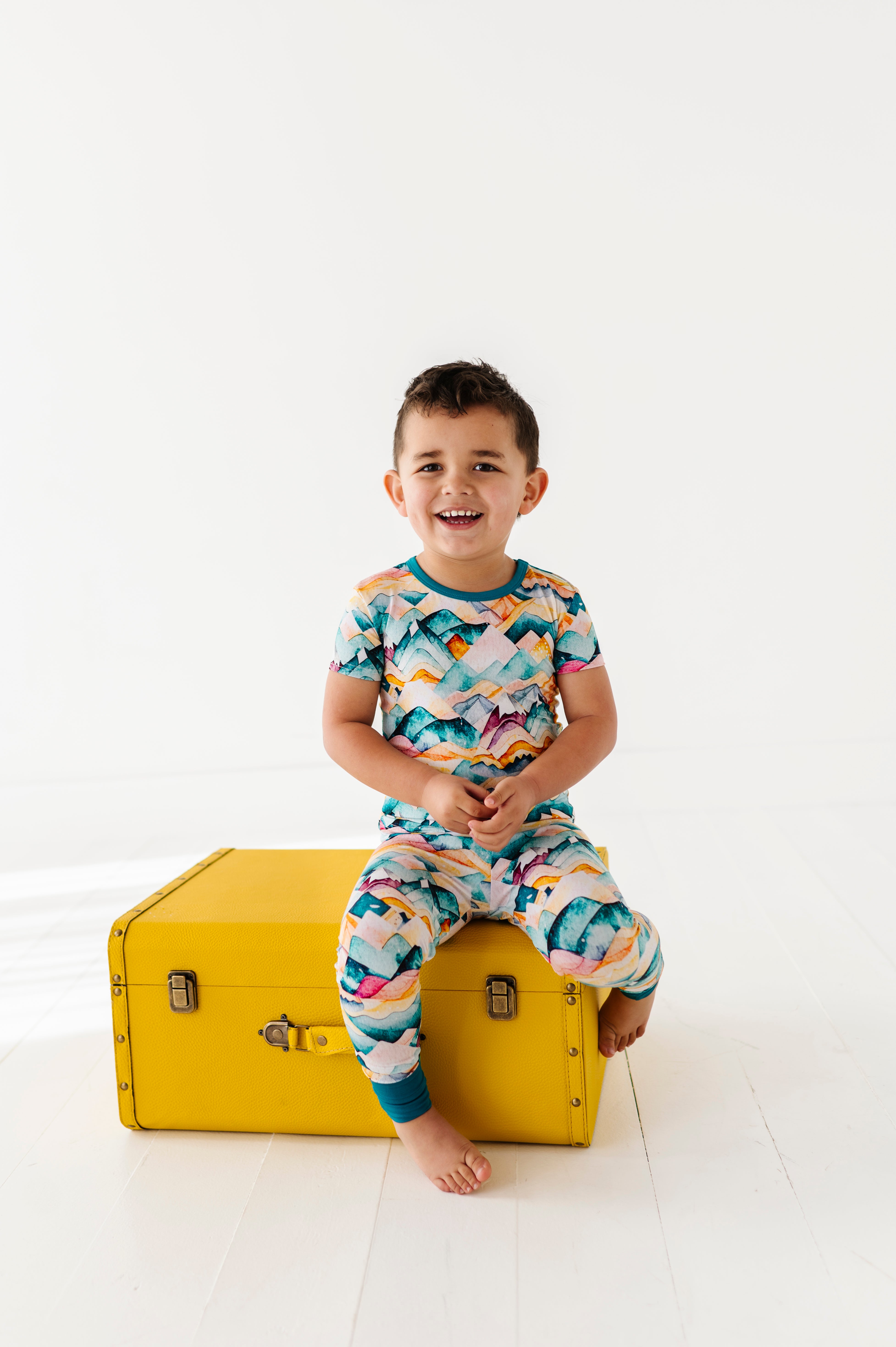Toddlers' sleep patterns are often a mystery to parents. At this age, children are learning to establish their sleep routines, which vary from one child to another. They typically need around 11 to 14 hours of sleep in 24 hours. However, their sleep can be disrupted by teething and growth spurts. Understanding these patterns helps you create a calm and consistent bedtime routine for your baby.
Common Sleep Challenges for Toddlers
Toddlers face several sleep challenges. Some of these include resisting bedtime, frequent night wakings, and difficulty staying in bed. These issues can stem from separation anxiety, fear of the dark, or simply the desire for more independence. Recognizing these challenges is the first step toward addressing them.
Developmental Stages Affecting Sleep
Several developmental stages impact a baby's sleep. As they transition from two naps to one, their sleep schedule becomes unsettled. Language development leads to increased chatter and excitement at bedtime.

This makes it harder for them to wind down. As your baby is beginning to assert their independence, it manifests as bedtime resistance. Being aware of these stages as a parent helps you better support your child and ensure a smoother sleep routine. For more insights into why your toddler may wake up upset from naps, explore our article on Why Does My Toddler Wake Up Crying From Naps?
Importance of Establishing a Bedtime Routine
Babies don't know it, but they love routines. There are so many changes happening in their lives every day, and they need a form of tether. Creating a bedtime routine provides them with a sense of security and predictability. This helps your kid feel more relaxed and ready for sleep.
A consistent routine signals to their body that it's time to wind down. This makes the transition to sleep smoother and more peaceful.
Benefits of a Consistent Bedtime Routine
A consistent bedtime routine offers numerous benefits, including:
- It helps regulate your little one's internal clock. This makes it easier for them to fall asleep and wake up at the same time each day.
- It reduces bedtime resistance and nighttime awakenings. This leads to more restful nights for both the child and you.
- Routine fosters a sense of stability and comfort, which is particularly important during times of change or stress.
Elements of an Effective Bedtime Routine
A good bedtime routine is there to set the mood and let your baby ease into sleep without hitches. So, the first thing on your agenda should be a hot bath.
- Bath Time: A warm bath should always be part of your bedtime routine. It is good enough to be a soothing start to the routine. It helps relax your baby's muscles. The warm water has a calming effect, making it easier for your child to settle down.
- Storytime: Reading a story together is a wonderful way to bond and wind down before bed. Choose calm, gentle stories. This activity encourages a love of reading and provides a comforting end to the day.
- Quiet Activities: Incorporate listening to soft music and gentle cuddling to further calm the baby. Whatever activity cultivates a sense of belonging and calmness, is a go.
These activities should be low-energy and soothing. Consistently including these activities in the bedtime routine helps reinforce the signals that it's time to go to bed.
Create a Sleep-Inducing Environment
Setting up a sleep-inducing environment helps your kid settle down and stay asleep. This environment should be both comfortable and safe. Let the child take one step in and feel a sense of security and relaxation. Here are some key elements to consider:
- Set Up a Comfortable and Safe Sleep Space
A toddler's sleep space should be cozy and inviting. Choose a comfortable mattress and use soft, breathable bedding appropriate for the season.
Keep the bed clear of toys and excessive blankets to ensure safety. For more guidance on safe sleep practices, check out our blog on when a baby can sleep with a blanket. Add a favorite stuffed animal or blankie to provide comfort without overcrowding the sleeping area. Always ensure that the bed meets all current safety standards to prevent traumatic events.
- Regulate the Room Temperature, Lighting, and Noise Levels
The room temperature plays a significant role in promoting sleep. Aim for a cool, comfortable temperature, between 65-70°F (18-21°C). This helps prevent your toddler from becoming too hot or too cold. For more detailed guidance on choosing the right temperature for your child’s sleep environment, refer to our Tog Temperature Chart.

Lighting also impacts sleep quality. A dark room signals to the body that it's time to sleep. Consider using blackout curtains to block out any external light. A small nightlight is helpful when your toddler is afraid of the dark, but make sure it's dim and not too bright.
Noise levels should be kept low to create a calm and quiet environment. White noise machines or fans help drown out any disruptive sounds from outside or within the home.
Set Clear Boundaries and Expectations
The baby is only learning what's right and what's wrong. It's your responsibility to show them their boundaries, including laying down bedtime rules and enforcing them.
Communication is key (even when setting bedtime rules). Explain to your toddler in simple terms what the bedtime routine will be and what is expected of them. For example, you might say, "After your bath, we read a story, and then it's time to sleep." Make sure they understand that these steps happen every night.
Enforce the same rules every night to help your toddler know what to expect. If they try to test boundaries, gently but firmly remind them of the rules. If they get out of bed, calmly take them back and remind them that it’s time to sleep.
Techniques to Keep Toddlers in Bed
Helping toddlers stay in bed through the night is hectic, yes. But we have to give it a try, and there are some techniques that many mothers attest to. The most effective of these techniques include:
- "Camping Out" Technique
This technique falls under the gradual sleep training methods. It allows you to stay close to your child as they fall asleep and gradually move away over time. Start by sitting next to their bed and slowly, night by night, move further away until you’re out of the room.
This approach helps your toddler feel secure as they learn to fall asleep on their own. Be patient and consistent, as this process can take a few weeks.
- Positive Reinforcement Strategies
Create a reward system where your child earns a small reward, like a sticker, for staying in bed all night. After accumulating a certain number of stickers, they can choose a larger reward. We suggest you take them to a special outing or a new toy. For more ideas on rewarding and supporting new moms, visit our blog on Christmas gifts for new moms.
- Address Common Excuses for Getting Out of Bed
Toddlers often come up with various excuses to get out of bed. Here are some common ones and how to address them:
- Need a Drink? Keep a small water bottle by their bed so they can take a sip without needing to leave the bed.
- Bathroom Needs? Make sure they use the bathroom right before bedtime. If they still get up, calmly take them back to bed afterward.
- Fear of the Dark? Use a nightlight to make them feel more secure without creating too much light that might disrupt sleep.
- Need Another Hug or Kiss? Incorporate plenty of hugs and kisses into the bedtime routine. If they ask for more after being tucked in, gently remind them that it’s time to sleep and that you’ll be there in the morning.
Addressing Nighttime Fears and Anxieties
Nighttime fears and anxieties are common in toddlers and can disrupt their sleep. Identify and address your child’s fears to help create a more comforting bedtime environment.

Toddlers often have vivid imaginations, which leads to various nighttime fears. Some common fears include:
- Fear of the Dark
- Separation Anxiety
- Loud Noises
- Strangers and Unknowns
Strategies to Alleviate Nighttime Fears
- Create a Comforting Environment: Use a soft, dim nightlight to provide a sense of security without disrupting sleep. Allow your toddler to sleep with a favorite stuffed animal or blankie. Maintain a consistent bedtime routine to provide a sense of predictability and security. For more information on why certain fabrics are not intended for children's sleepwear, read our blog on fabric safety.
- Address Fears Directly: Encourage your toddler to express their fears. Listen calmly and validate their feelings. Reassure them that their feelings are normal. Help them imagine positive, comforting scenarios. Talk about their favorite characters watching over them as they sleep. If your kid is afraid of monsters, do a quick "monster check" before bed to show them their room is safe.
- Provide Reassurance: When your child wakes up scared, stay calm and provide gentle reassurance. Remind them that they are safe and you are nearby. If separation anxiety is an issue, use the camping out technique we discussed earlier.
Manage Nighttime Wakings
Let's discuss some effective strategies to settle back to sleep quickly and peacefully. Always approach your child with a calm and soothing demeanor. Keep interactions brief and quiet. Avoid turning on bright lights or engaging in stimulating activities.
Quickly check if they need anything. A diaper change or a drink of water, and address it without lingering.
Techniques to Soothe a Waking Toddler Back to Sleep
- Offer a gentle pat or stroke on the back. Reassure your toddler that you are there and it’s time to sleep.
- If your child is used to falling asleep with your presence, reduce the amount of time you spend in their room during nighttime wakings. Use the camping-out method.
- A white noise machine creates a consistent, soothing background sound. It helps mask other noises and eases sleep.
- Ensure your toddler has their favorite blanket or stuffed animal, as a sense of security.
Product-Specific Recommendations
Here are some recommended items that can help your baby with a hassle-free sleep:
- Toddler Blankies: Check out the "Ballet Bunnies'' and "Party Llama" designs. These are designed to provide warmth and a sense of security.
- Sleep Sacks: Using a sleep sack prevents your toddler from kicking off their covers and getting cold.
- Sleep Training Clocks: These clocks are designed to teach toddlers when it's time to sleep and when it's okay to get up. Look for models that use colors or icons to communicate sleep and wake times.
- White Noise Machines.
- Two-Piece Jammies: Comfortable and soft pajamas make a big difference in how well a toddler sleeps.
- Adaptive Zip Jammies: These are particularly useful for toddlers who need easy access clothing. They provide comfort without compromising on practicality.
For more detailed reviews and options, you can visit The Sleepy Sloth's website directly to explore their extensive range of toddler sleep products and find what best suits your needs.
Additional Tips for Parents
- Maintain a sleep diary to record when your toddler goes to bed, when they wake up, and any nighttime awakenings.
- Pay attention to your toddler’s daytime behavior. Signs of sufficient sleep include good mood, energy levels, and attentiveness.
- Use the information from your sleep diary and behavioral cues to adjust bedtimes or routines as needed.
- Regularly assess how well your current sleep strategies are working.
- Make small, incremental changes to your toddler’s routine.
- As your toddler grows, involve them in their sleep routine. Let them choose a bedtime story or a comfort object.
FAQ
What Should I Do if My Toddler Gets Out of Bed?
Return them to their bed each time. Keep interactions minimal and avoid engaging in conversation or playing. They need to understand that bedtime means staying in bed. Reiterate the bedtime rules and reassure them without prolonging the interaction.
How Long Can a Toddler Adjust to a New Bedtime Routine?
Adjusting to a new bedtime routine can take anywhere from a few days to a few weeks.
How Can I Help My Toddler Be Scared of the Dark?
Use a nightlight to provide a soft, comforting glow in their room. Engage in positive, reassuring conversations about the dark, and avoid scary stories or shows before bedtime. Incorporate a favorite stuffed animal or blanket to offer extra comfort, and perform a "monster check" if needed to reassure them that their room is safe.
What Are the Signs of an Overtired Toddler?
An overtired toddler is easily irritable, they throw more tantrums and find it difficult to settle down by nighttime. They are hyperactive and clumsy. When they finally settle down for sleep, they wake up more frequently.
What Products Help Keep Toddlers in Bed?
We have the sleep training clocks, which teach them when it's time to sleep and wake up. The white noise machine provides a consistent sound environment; and comfortable sleepwear.
What if My Toddler Wakes up and Won’t Go back To Sleep?
Check for any immediate needs like hunger or a wet diaper. Use a calming voice and gentle touch to help them relax. Leave the room quietly when they start to settle down.


















